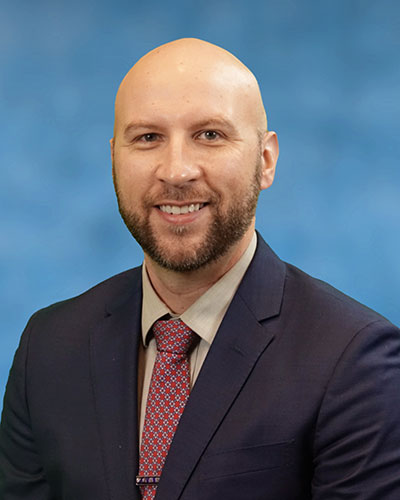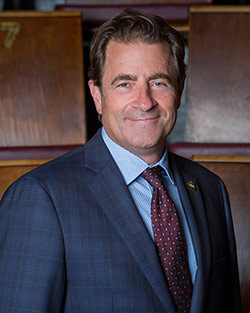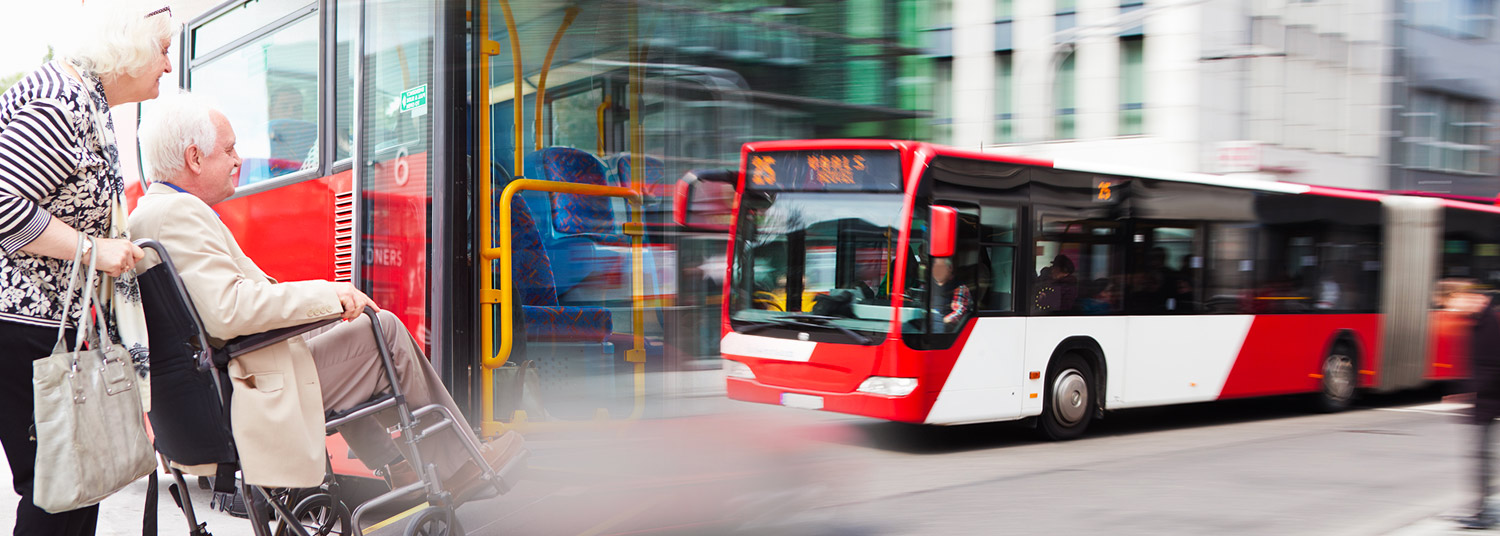October 24, 2022 | Deborah Kotz
Research Points to Pressing Need to Improve Infrastructure and Accessibility for Frail Patients
About one in 10 seniors who live in cities reported that they use public transportation, and 20 percent of older transit users said they relied on trains and buses to get to their doctor appointments. Frailty and living in an area with broken sidewalks were both linked to a lower use of public transit, according to a new study led by University of Maryland School of Medicine (UMSOM) researchers.

“While our data was collected before the Covid pandemic, we know the pandemic disrupted public transportation, which is still continuing due to financial strain, staffing shortages, and cutbacks to transit services across the county,” said study senior author Jason Falvey, DPT, PhD, Assistant Professor of Physical and Rehabilitation Science at UMSOM. "We worry about the impact that this disruption is having on the nearly 700,000 older Americans who rely on subways and buses to get to their medical appointments.”
Many transit users age 65 and older must stand in extreme heat, rain or cold conditions for upwards of 25 minutes waiting for mass transit, which is far longer than pre-pandemic wait times. Such factors could exacerbate chronic conditions like heart failure, kidney disease, or diabetes, Dr. Falvey added.
To conduct the study, he and his colleagues analyzed data from the National Aging and Trends Study, a nationally representative survey of Medicare beneficiaries age 65 and older. They looked specifically at those living independently in urban areas who were surveyed on their use of public transportation (bus, subway, or train) during the previous month. Black and Hispanic seniors were more likely to use public transmit, as were those who were financially strained, according to the study.
Accessibility posed the biggest challenge: Those who used wheelchairs were 65 percent less likely to use public transit. Older adults who lived in areas with cracked or broken sidewalks were also less likely to use transit, which may amplify other known impediments to transit use such as malfunctioning elevators at underground or elevated train stations.

The study was partly funded by a $1.1 million grant from the National Institute on Aging (K76AG074926) awarded to Dr. Falvey last year as an “emerging leader in aging research.” UMSOM medical student Afnan Gimie, BS, was the first author on the study. Andrea Melgar Castillo, PhD, and C. Daniel Mulllins, PhD, at the University of Maryland School of Pharmacy were co-authors.
Dr. Falvey and his colleagues plan to conduct a follow-up pilot study next year in West Baltimore to test the feasibility of certain interventions that can help seniors living with a disability better access public transportation. This will include providing mobility-related equipment to help them navigate uneven sidewalks as well as free transit passes to enable them to attend medical appointments with a caregiver without added costs.
“Our current study found that transit users were more likely to go to their doctor visits alone compared to those who did not use public transportation, likely because of financial constraints,” Dr. Falvey said. “Having a loved one at these visits can be a vital part of successful management of chronic health conditions common in seniors.”
About the University of Maryland School of Medicine
Now in its third century, the University of Maryland School of Medicine was chartered in 1807 as the first public medical school in the United States. It continues today as one of the fastest growing, top-tier biomedical research enterprises in the world -- with 46 academic departments, centers, institutes, and programs, and a faculty of more than 3,000 physicians, scientists, and allied health professionals, including members of the National Academy of Medicine and the National Academy of Sciences, and a distinguished two-time winner of the Albert E. Lasker Award in Medical Research. With an operating budget of more than $1.3 billion, the School of Medicine works closely in partnership with the University of Maryland Medical Center and Medical System to provide research-intensive, academic, and clinically based care for nearly 2 million patients each year. The School of Medicine has nearly $600 million in extramural funding, with most of its academic departments highly ranked among all medical schools in the nation in research funding. As one of the seven professional schools that make up the University of Maryland, Baltimore campus, the School of Medicine has a total population of nearly 9,000 faculty and staff, including 2,500 students, trainees, residents, and fellows. The combined School of Medicine and Medical System (“University of Maryland Medicine”) has an annual budget of over $6 billion and an economic impact of nearly $20 billion on the state and local community. The School of Medicine, which ranks as the 8th highest among public medical schools in research productivity (according to the Association of American Medical Colleges profile) is an innovator in translational medicine, with 606 active patents and 52 start-up companies. In the latest U.S. News & World Report ranking of the Best Medical Schools, published in 2021, the UM School of Medicine is ranked #9 among the 92 public medical schools in the U.S., and in the top 15 percent (#27) of all 192 public and private U.S. medical schools. The School of Medicine works locally, nationally, and globally, with research and treatment facilities in 36 countries around the world. Visit medschool.umaryland.edu
Contact
Deborah Kotz
Senior Director of Media Relations
Office of Public Affairs & Communications
University of Maryland School of Medicine
Email: DKotz@som.umaryland.edu
o: 410-706-4255
c: 410-804-0054
t: @debkotz2
Related stories

Monday, March 07, 2022
Financial Strain Linked to Increased Risk of Death in Older Adults Recovering from Heart Attack, UM School of Medicine Study Finds
Older adults who report being under severe financial strain were substantially more likely to die within six months of having a heart attack compared to those with moderate or no financial strain, according to a new study led by University of Maryland School of Medicine (UMSOM) researchers. Findings were published last week in the JAMA Internal Medicine and point to glaring disparities in medical outcomes due to financial circumstances.

